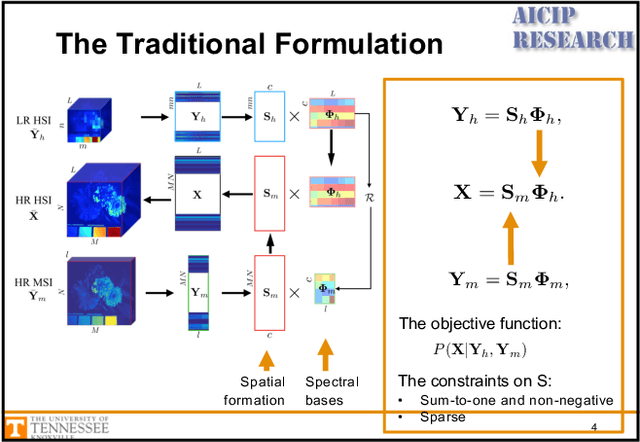Unsupervised Sparse Dirichlet-Net for Hyperspectral Image Super-Resolution
Paper and Code
Jul 15, 2018
In many computer vision applications, obtaining images of high resolution in both the spatial and spectral domains are equally important. However, due to hardware limitations, one can only expect to acquire images of high resolution in either the spatial or spectral domains. This paper focuses on hyperspectral image super-resolution (HSI-SR), where a hyperspectral image (HSI) with low spatial resolution (LR) but high spectral resolution is fused with a multispectral image (MSI) with high spatial resolution (HR) but low spectral resolution to obtain HR HSI. Existing deep learning-based solutions are all supervised that would need a large training set and the availability of HR HSI, which is unrealistic. Here, we make the first attempt to solving the HSI-SR problem using an unsupervised encoder-decoder architecture that carries the following uniquenesses. First, it is composed of two encoder-decoder networks, coupled through a shared decoder, in order to preserve the rich spectral information from the HSI network. Second, the network encourages the representations from both modalities to follow a sparse Dirichlet distribution which naturally incorporates the two physical constraints of HSI and MSI. Third, the angular difference between representations are minimized in order to reduce the spectral distortion. We refer to the proposed architecture as unsupervised Sparse Dirichlet-Net, or uSDN. Extensive experimental results demonstrate the superior performance of uSDN as compared to the state-of-the-art.
 Add to Chrome
Add to Chrome Add to Firefox
Add to Firefox Add to Edge
Add to Edge